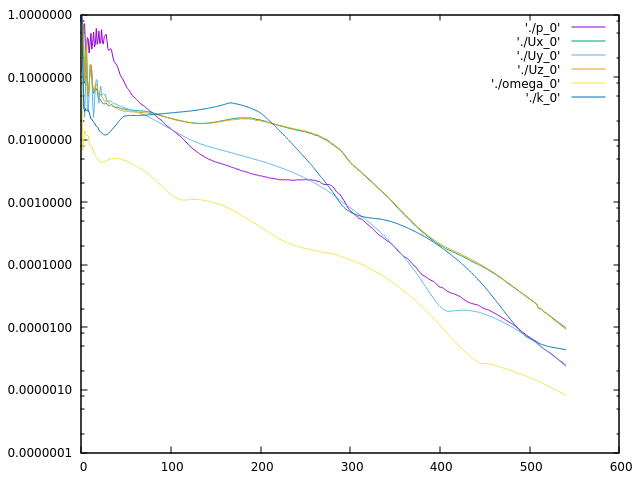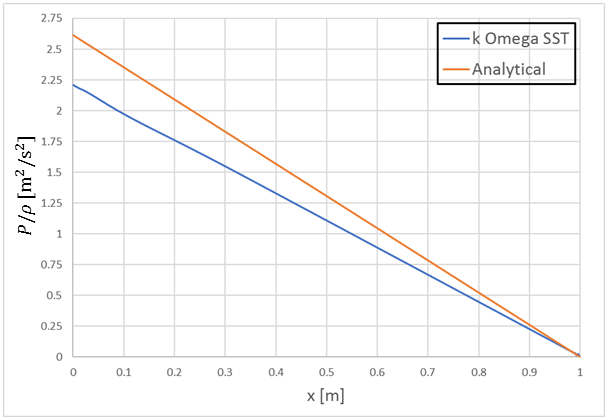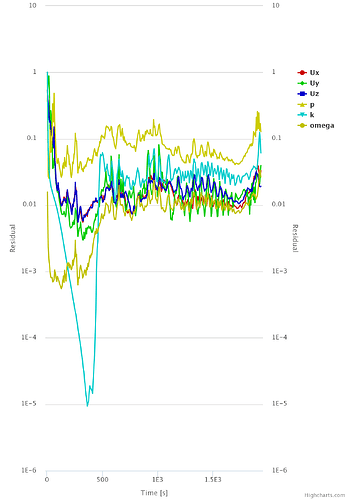Hi everyone,
I’m developing a validation of Turbulent Flow on a Pipe with roughness on the wall (Validation of Wall Functions for Turbulent Pipe Flow with Roughness as a continuation from work discussed in this thread (Validation of Turbulent Pipe Flow). Previously, existed a problem with the wall functions that didn’t allow reproduce the results of the turbulent flow whithin a smooth pipe, problem that was solved and verified. Now, I’m interested in the same problem but with pipes with different roughnesses. However, the simulation of this problem presents serious convergence problems regardless of the roughness value used, which results in high and unphysical values on the pressure drop. In the next image you can see the behaviour of the convergence for the results on SimScale (this behaviour changes insignificantly despite the change in roughness):
As a verification, I developed a simulation for a pipe with a relative roughness of 0.02 and implementing the same mesh and simulation parameters but using OpenFoam 4.0. The results have the expected behaviour. In first place, the simulation shows a good quality in terms of convergence:

Here the results of the pressure drop along pipe compared with the analytical solution of the Colebrook equation. The discrepancy is the 15.5 % for the Pressure Loss.

In conclusion, there is a problem with implementation of rough wall functions, which may be due to the version of OpenFoam used in SimScale or to some modification realized on these functions. The use of this wall functions are important not only to pipe problems but also for simulation of boundary layer for aerodynamic rough surfaces, so if you can revise this problem, would improve the accuracy of the prediction of these problems with SimScale.
Best Regards,
Carlos Ramírez

